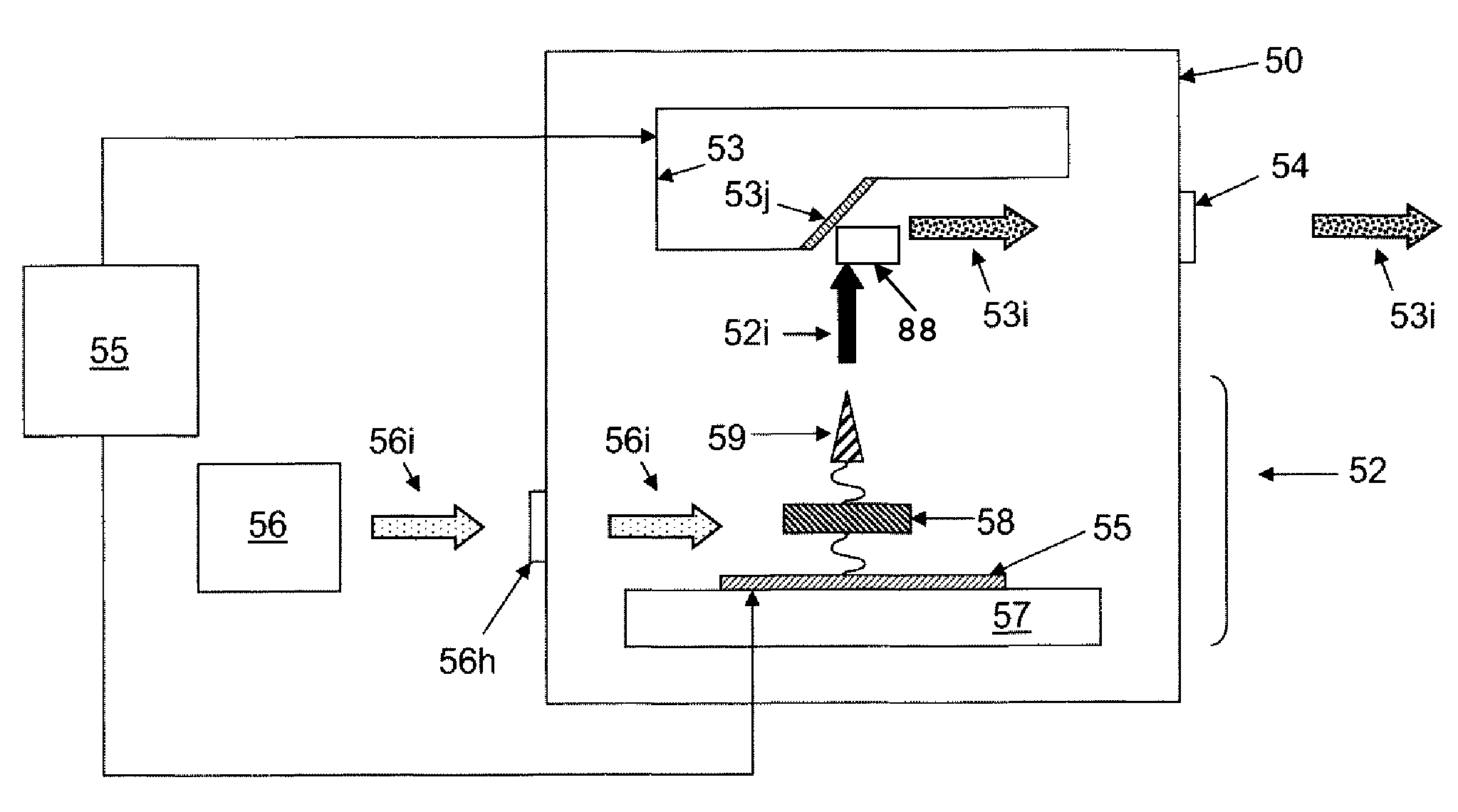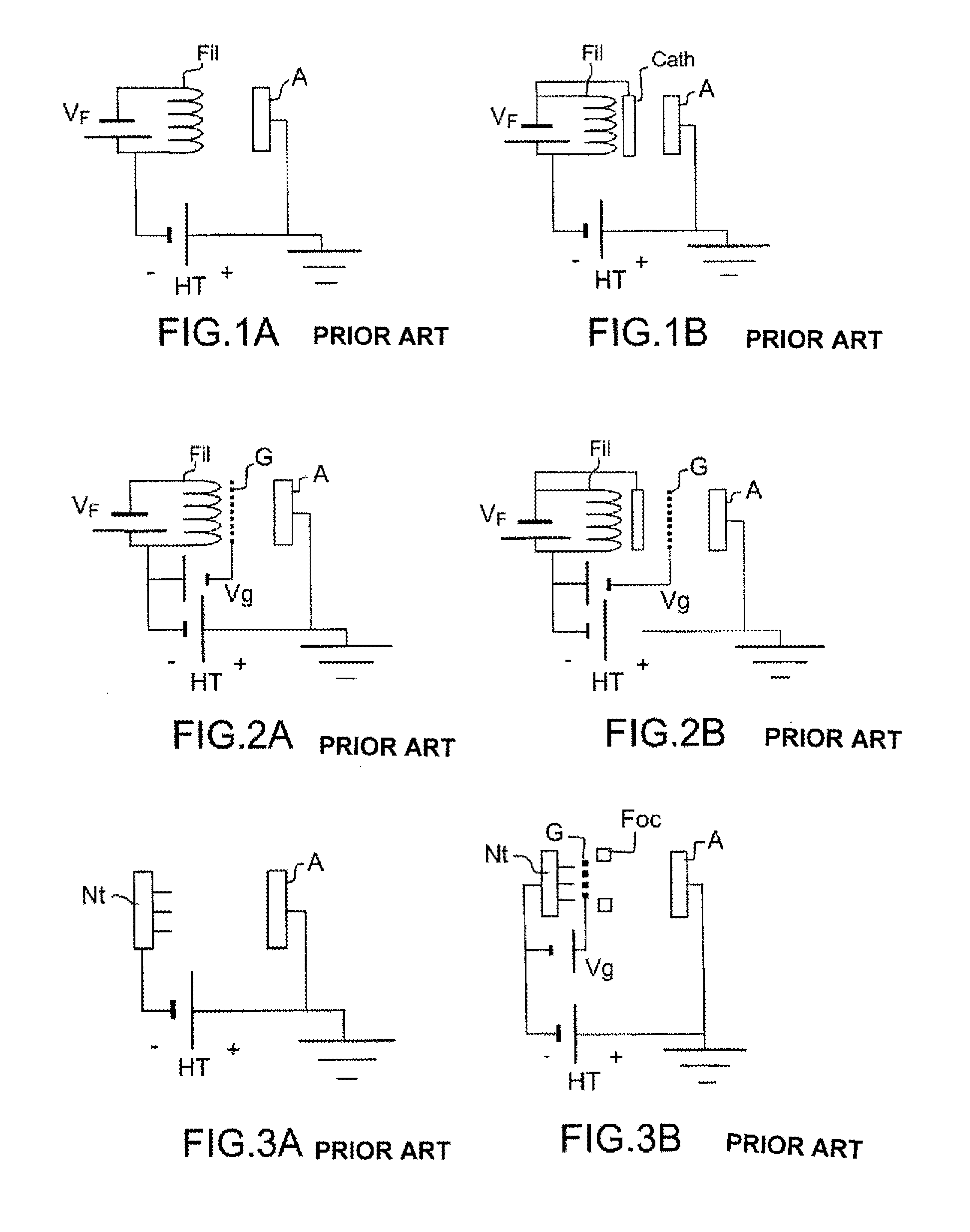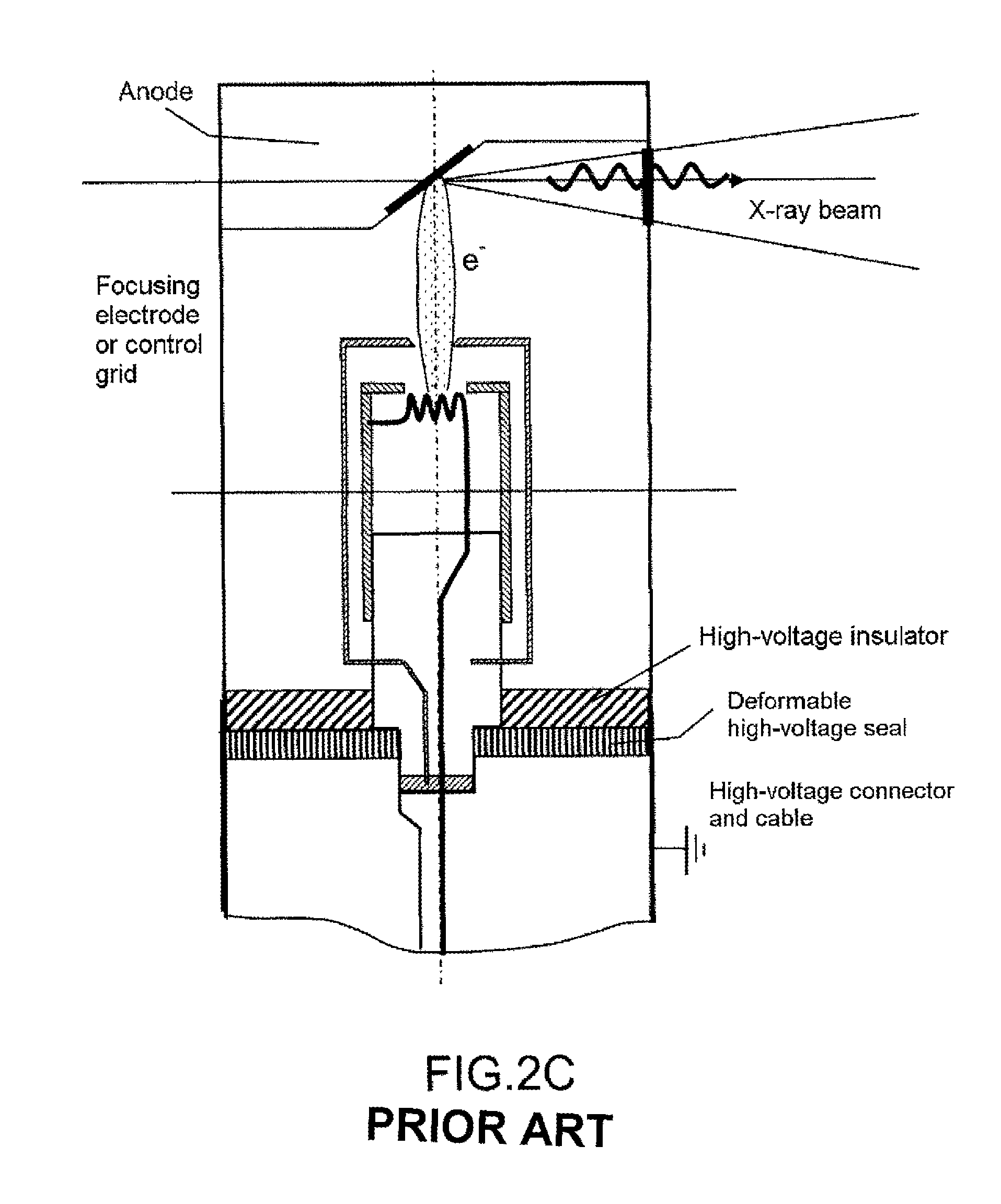X-rays source comprising at least one electron source combined with a photoelectric control device
a control device and electron source technology, applied in the field of radiation sources, can solve the problems of affecting the quality of the received image, difficult in particular to discriminate between substances having similar densities, and limited detection and identification capability, and achieve the effect of high precision and very sensitive control
- Summary
- Abstract
- Description
- Claims
- Application Information
AI Technical Summary
Benefits of technology
Problems solved by technology
Method used
Image
Examples
first exemplary embodiment
[0099]According to a first embodiment of the invention, illustrated in FIG. 5, the radiation source is a mono-beam source and comprises a vacuum chamber 20, high-voltage power supply means 21 and electrical insulation means 22, an illumination source 23 directing a light beam 24 onto an optically reflective device 25, i.e. reflective for the wavelengths used, so as to excite the photosensitive layers of a cathode 26 for generating an electron stream 27 sent to a target 28. The bombardment of said target then generates the stream of X-rays 30 through a window 29 transparent to said X-rays with which the chamber is equipped. Advantageously, the chamber may also be equipped with means 31 for cooling the target, which is intensely heated during bombardment by the electron streams.
second exemplary embodiment
[0100]The radiation source generates a multiplicity of X-ray streams 40i thanks to the presence of a series of chambers (X-ray tubes) 411 distributed in a circular support 42, said circular support also including means for distributing the power from a high-voltage power supply 43, as illustrated in FIGS. 6A and 6B.
third exemplary embodiment
[0101]The radiation source may also be a multi-beam source and may comprise a single chamber as illustrated in FIGS. 7A, 7B, 7C and 7D. According to the example shown, said chamber 50 may advantageously be of several forms incorporating variously arranged electron sources. The nonexhaustive examples show: a planar convergent organization (FIG. 7A); a circularly arranged parallel-beam organization (FIG. 7B); a perpendicularly arranged parallel-beam organization (FIG. 7C); and a matrix-arranged parallel-beam organization (FIG. 7D).
[0102]FIG. 8 illustrates an example of means for modulating 66 the electron spot on the target, associated only with the illumination zone (with neither a grid nor an emitter array mechanically determining the emission zones).
[0103]In general, the present invention provides, in response, a radiation source comprising a cold electron source subjected to an electric field and operating by field emission, and a photoconductive element placed in series with the ...
PUM
 Login to View More
Login to View More Abstract
Description
Claims
Application Information
 Login to View More
Login to View More - R&D
- Intellectual Property
- Life Sciences
- Materials
- Tech Scout
- Unparalleled Data Quality
- Higher Quality Content
- 60% Fewer Hallucinations
Browse by: Latest US Patents, China's latest patents, Technical Efficacy Thesaurus, Application Domain, Technology Topic, Popular Technical Reports.
© 2025 PatSnap. All rights reserved.Legal|Privacy policy|Modern Slavery Act Transparency Statement|Sitemap|About US| Contact US: help@patsnap.com



